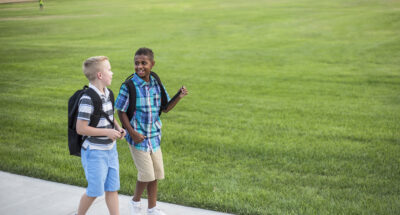
36 Questions to Help Kids Make Friends
Pairs of students take turns asking and answering sets of questions, helping them to form a new friendship.

Pairs of students take turns asking and answering sets of questions, helping them to form a new friendship.
Students will:
Leslie Echols, Ph.D., Missouri State University
Middle schoolers paired with an unfamiliar partner of the same age and gender met once a month for three months. Pairs got to know each other by taking turns asking the 36 questions, and then competed with other pairs to cooperatively build a block tower. At the end of three months, middle schoolers felt they had a closer relationship with their partner than other classmates. This was true for both male and female pairs, of the same ethnicity and different ethnicities.
Childhood friendships are important to well-being. Having just one friend can help kids be more invested in their schoolwork and protect them from being bullied. Friendships across ethnicities are especially valuable and lead kids to be more adaptable and socially confident. For example, kids with cross-ethnicity friendships tend to be better liked by other kids, be more self-confident, have a more positive mood, and feel safer at school.
But making friends can be awkward. Knowing how to talk to others in a way that fosters genuine connectivity and paves the way for real friendship—particularly with those who are different from us—is a valuable life skill. This exercise helps you guide students to talk to other students in that way.
This exercise is particularly useful at transition times, like when children start middle school with many students they don’t know.

Are you ready to build a kinder, happier school where everyone belongs? Join Greater Good Educators! Explore the science of well-being in a supportive community of educators from around the world. Registration is now open for the 2025-2026 school year!
Comments